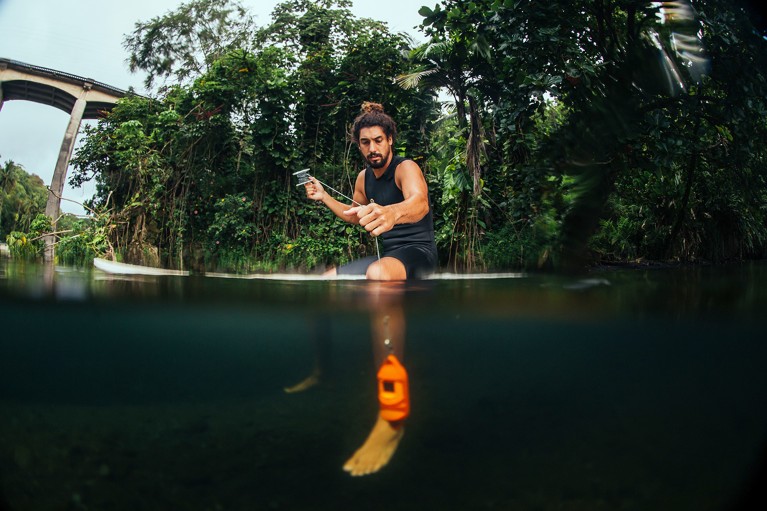My surfboard is the best way to reach my favourite research site: the Hawaiian coast near the town of Hilo. I grew up surfing these waters, and now I study the coral reef beneath the huge waves. I have to sample in clear weather and hurricanes, and it would be tough to navigate the surf in any other type of vessel.
Here, I’m using a device to measure conductivity, salinity and depth in the mouth of the Honoli‘i stream, an important player in the coral ecosystem. The stream creates a layer of fresh water that sits above the reef.
With support from the US National Science Foundation, I’m studying how changes in stream flow affect that freshwater layer and the overall health of the coral.
Coral is threatened in many parts of the world, but the reef here remains vibrant. I’m trying to discover the secrets of its success. It’s possible that the freshwater layer acts like a shield or a canopy.
After a big rainfall, that layer stays dark and muddy for a while, but the coral has seemingly adapted to regular disturbances. It’s exactly the type of resilient system that I would want to study, and it happens to be in my home surfing spot.
My work always comes back to the ocean. In another project, I collected bacterial samples from surfers in different parts of the world to see how their contact with the ocean changed their skin and gut microbiomes. You can tell how much time a person spends in sea water by their bacteria. For future research, I’d be interested to know if those ocean bacteria produce metabolites or neurotransmitters that affect health. Surfing might turn out to be good for you in ways we don’t yet understand.
I’m so lucky to be working in my home waters. As an analytical chemist, I spend a fair amount of time processing data on a computer or running samples through a mass spectrometer, but my best moments as a researcher are outside, on my board.


 Mesmerized by maritime marvels
Mesmerized by maritime marvels
 Fieldwork: Extreme research
Fieldwork: Extreme research
 Leisure activities: The power of a pastime
Leisure activities: The power of a pastime








